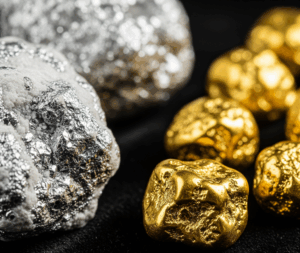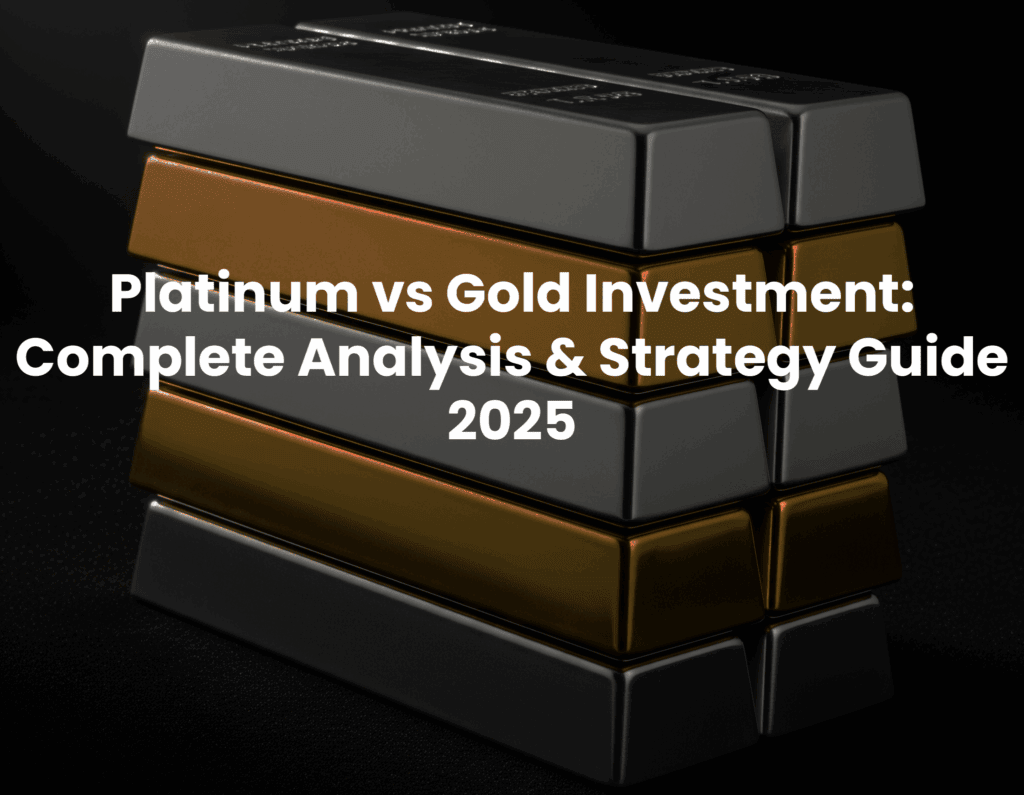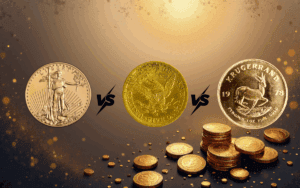Platinum and gold represent two distinct precious metals investment approaches. While platinum trades as an industrial commodity, its prices are driven by automotive demand. Gold functions as monetary insurance against inflation and currency instability. Both metals offer portfolio protection, but their performance patterns differ considerably.
Key Differences Between Platinum and Gold

Platinum investment centers on industrial demand fundamentals. Over 40% of platinum demand comes from automotive catalytic converters, with jewelry and investment splitting remaining usage. This creates price sensitivity to auto industry cycles.
Gold operates differently. Central bank purchases, jewelry demand, and safe-haven buying create steady price support. Gold trades more on monetary policy and economic uncertainty than industrial factors.
Supply concentration adds another layer. South Africa produces 70% of global platinum from deep, costly mines. Gold production spreads across multiple countries, reducing geopolitical supply risks.
Market Performance and Volatility Patterns
Platinum historically traded at premiums to gold, reaching 40% higher during supply shortages. This relationship inverted in 2011, with platinum trading below gold prices since then.
The platinum-to-gold ratio tells the supply-demand story. When platinum trades at 1.4 times gold prices, it signals strong automotive demand and supply constraints. Today’s ratio below 1.0 suggests either platinum undervaluation or structural demand shifts.

Volatility differs markedly between these metals. Platinum experiences 30-40% annual price swings compared to gold’s 15-20% ranges. This creates trading opportunities but challenges buy-and-hold strategies.
During the 2008 financial crisis, both metals initially declined. Gold recovered faster as safe-haven demand emerged. Platinum remained depressed longer due to collapsed automotive sales. This highlights how industrial metals face different recession dynamics than monetary metals.
Technical price patterns show gold trending steadily during major moves. Platinum exhibits sharp spikes and corrections, making timing more critical for platinum investment strategies.
Investment Allocation Approaches
Conservative investors should treat platinum as a gold complement, not replacement. A balanced precious metals allocation might include 70-80% gold and 20-30% platinum.
Conservative Strategy includes 3-5% total precious metals allocation with 80% gold positions for stability and liquidity, plus 20% platinum for industrial exposure.
Balanced Strategy involves 5-8% total allocation with 60% gold for monetary hedge properties and 40% platinum for industrial demand upside.
Aggressive Strategy requires 8-10% allocation split evenly between gold for portfolio insurance and platinum for maximum industrial metal exposure.
Storage considerations matter. Both metals require secure storage, but platinum’s higher density provides more value per cubic inch. Gold markets offer superior liquidity with tighter bid-ask spreads.
Investment vehicles each carry different characteristics. Physical metals provide direct ownership but require storage solutions. ETFs offer liquidity but involve management fees and counterparty risks. Mining stocks amplify price movements but add company-specific risks.
Dollar-cost averaging works well for both metals, smoothing volatility over time. Monthly purchases of $200-500 can build meaningful positions while reducing timing risks.

Current Market Conditions and Outlook
Gold benefits from ongoing monetary expansion and geopolitical tensions. Central bank buying remains strong, providing steady demand support. Real interest rates near zero make non-yielding gold attractive relative to bonds.
Platinum opportunity focuses on supply-demand imbalances. Automotive recovery post-chip shortages should boost catalytic converter demand. Growing hydrogen fuel cell adoption creates new platinum applications. Years of underinvestment in South African mines may create future supply shortfalls.
The bear case for platinum involves accelerated electric vehicle adoption reducing catalytic converter needs faster than hydrogen applications can offset. For gold, rising real interest rates pose the primary downside risk.
Three economic scenarios merit consideration. In an inflationary environment, both metals benefit, but gold’s monetary role provides advantages over industrial platinum. During a deflationary recession, gold’s safe-haven status outperforms platinum’s industrial demand destruction. In a balanced economy, steady growth favors platinum’s automotive and industrial applications over gold’s insurance properties.
Investment timelines matter. Gold offers immediate portfolio insurance against currency debasement and market volatility. Platinum investment represents a longer-term value play requiring patience for industrial demand recovery.
Taking Action on Your Investment Strategy
Start by determining risk tolerance and investment timeline. New precious metals investors should begin with gold as the core holding, adding platinum gradually as comfort with volatility increases.
Immediate steps include researching current spot prices and recent trends, setting monthly investment budget (2-3% of income maximum), choosing reputable dealers with transparent pricing, planning secure storage solutions or vault services, and understanding tax implications of precious metals ownership.
Consider professional consultation for positions above $10,000. Financial advisors familiar with alternative investments can integrate precious metals with broader portfolio strategies and tax planning.
Both platinum and gold require patience. These metals can experience extended sideways periods punctuated by sharp moves. Success depends on maintaining allocation discipline while remaining flexible enough to adjust as conditions evolve.
Should you start investing in gold or platinum?
Research dealers, compare premiums, and begin with small test purchases. Building positions gradually through dollar-cost averaging reduces timing risks while allowing you to learn how these assets behave in your portfolio.
The key to successful precious metals investing involves consistent accumulation at reasonable premiums rather than attempting to time market peaks and valleys. Whether you choose platinum’s industrial leverage or gold’s monetary stability, both metals can provide valuable portfolio diversification when held with proper position sizing and realistic expectations.



